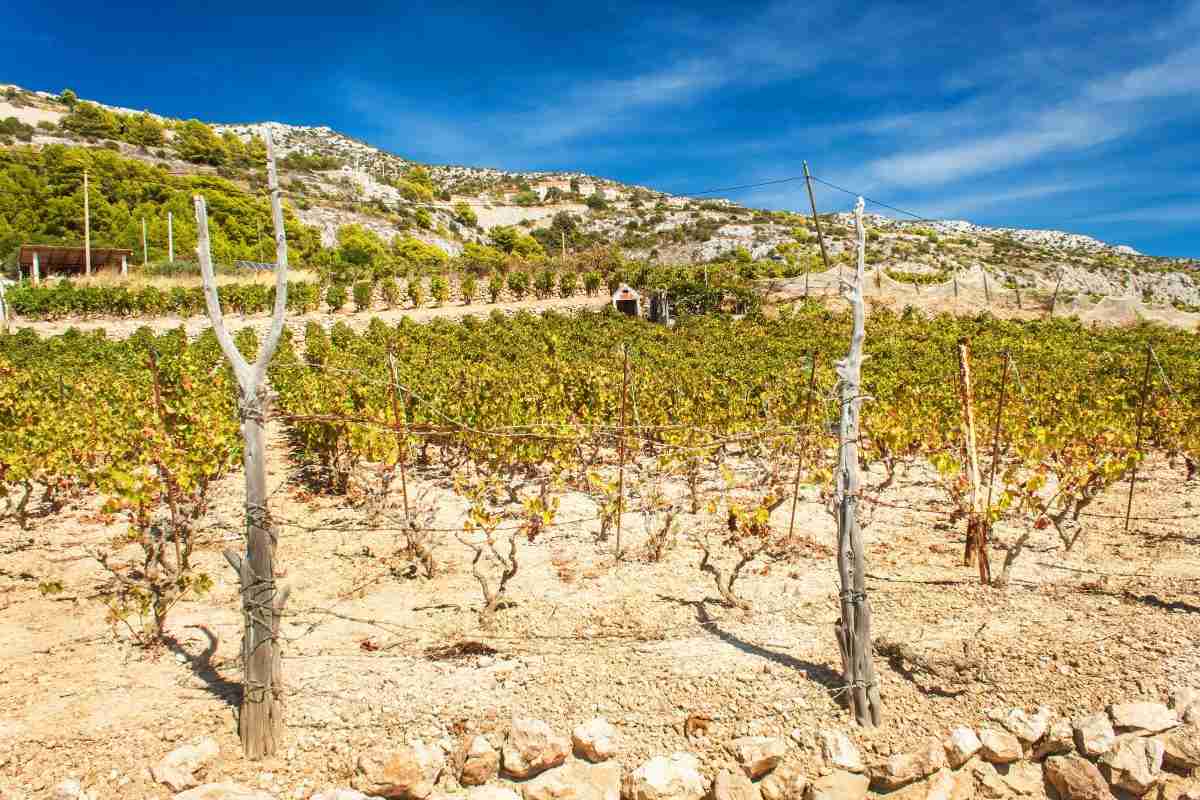California’s Parched Vineyards: Navigating Plant Water Stress in Drought Conditions

The grape vine is a hearty plant. Likely cultivated since the beginning of civilization itself, it has weathered many a storm. Vineyards have withstood disease, pests, hail, war, floods, drought, and fires over the millennia.
But every living being has a breaking point. Human intervention is often required in both extreme and expected scenarios. If it were not for farmers and scientists working hand-in-hand to combat environmental challenges, Vitis vinifera may have died out long ago, and the global wine industry would look very different today.
As climate science progresses amid the further degradation of the Earth, it has become clear that climate change inevitably means less predictable and more extreme weather events. They may be brief, like the ferocious winds of a hurricane, or they may loom for years, such as in the case of a long drought.
California: Feeling the Heat
Wine growing has become an agricultural cornerstone of California, which is the world’s fourth-largest producer of wine. The state’s primarily mediterranean climate has made it an ideal region for growing grape varieties from around the world. Warm temperatures and ample sunlight have been a blessing for long ripening seasons.
But those warm temperatures are rising, and California is feeling the heat. According to the Environmental Protection Agency (EPA), average temperatures in southern California have risen as much as 3.5 degrees Fahrenheit over the last century.
Heat, on its own, may not be an immediate threat to viticulture. As long as winter temperatures remain low enough for grape vines to enter dormancy (between 32 and 50 degrees Fahrenheit), and as long as the diurnal temperature range (the difference between the daily maximum and minimum temperatures) remains wide enough to maintain essential characteristics for winemaking during the ripening process, such as sugar and acidity levels, grape vines can adapt.
Heat, Precipitation, and the Viability of Agriculture in California
Temperature is not the only climatic influence on agriculture. Water is an essential resource for living beings, grape vines included, and water sources are finite.
The planet is dependent on precipitation to replenish watersheds. While there is no clear trend indicating that precipitation in California is steadily declining, climatologists now understand that annual precipitation is more variable and less dependable than ever before. That means droughts are likely to be more intense and to last longer than in the past.
Californians are acutely aware of this. 2021 marked California’s driest year in the last century. The Western Regional Climate Center calculated that a total of 11.87 inches of rain and snow fell in the water year. That figure is less than half of California’s average annual precipitation, which is about 23.58 inches.
Rising temperatures contribute to the water crisis. Elevated air temperatures cause faster rates of evaporation. If there is not enough precipitation to exceed the rate of evaporation and water use, the water table will not be replenished.
The success of agriculture in California would not be possible without irrigation. As of 2016, about 90 percent of crops harvested in California were grown on farms that were entirely irrigated. Agriculture accounts for approximately 80 percent of all water use in the state.
Grape Vines and Plant Water Stress
“Stress is good for grape quality!”
This exclamation may be heard constantly, from the tasting rooms of Napa Valley to the Michelin star restaurants of New York City. There is truth to this statement. There are also a number of caveats.
Moderate water stress, when applied at the right time during the growing season, can help reduce vegetative growth and create greater balance between vegetation and fruit yield and quality. Meanwhile, overabundant water can cause excessive shoot vigor, canopy shading, and reduced quality fruit.
Severe water stress, the more likely scenario for California winegrowers, has a number of implications that may cause immediate harm during the growing season and future harm toward the health of the vine. Severe water stress limits photosynthesis, which may cause delayed ripening, reduced bud fruitfulness, reduced winter hardiness, potentially leading to vine collapse.
A 2002 study by researchers at Cornell University confirmed that water stress can significantly reduce vine function, yield, and fruit composition - particularly in soils with low water holding capacity. In drought conditions, the researchers monitored one set of vines that remained unirrigated, and another set of vines that were irrigated. The unirrigated vines, lacking photosynthesis, resulted in 3 degrees Brix lower soluble solids at harvest. Pruning weights of the irrigated vines were twice that of the unirrigated vines.
Watering Smarter
As water becomes scarcer and temperatures continue to rise, precise irrigation has never been more essential. Irrigation based on data, like soil moisture and vine water status, helps achieve the delicate balance between water overabundance and severe water stress for optimal grape quality and yield.
But even with good data, irrigating accordingly is often easier said than done. Beyond water scarcity, growers face numerous issues in the field, from labor shortages to failing or outdated irrigation systems.
Smart irrigation systems help farmers optimize irrigation schedules, create zone-specific irrigations, detect leaks, and respond to data in real-time at the click of a button. By watering more precisely, it is possible to reduce water use while increasing grape quality.
To learn more about smart irrigation systems to automate your irrigation scheduling and help resist water shortages, contact Lumo here or email us at [email protected]